Lions of the Kalahari: Seeking Asylum
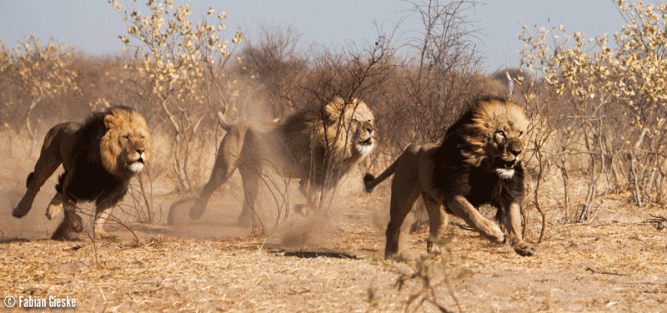
The lion, a global symbol of bravery and strength, is today a wild population plunged into a dangerous existence. Due to the unstoppable expansion of human settlements, Africa’s endless savannah has found boundaries; excruciatingly confining for the wildlife that has forever called it home. The conflict ignited between farmer and predator has led to a tragic loss of lion lives in rural Botswana and other African countries, cumulatively eliminating huge numbers of these, and other, big cats. Species survival, the future of lions, is now reliant on the intervention of humans. (Read: the men who protect their lions.)
Modisa, meaning ‘guardian’ in the local language, Setswana, is a 2 year old wildlife conservation project that embodies its title wholeheartedly. Its founders, Valentin Gruener and Mikkel Legarth, were irresistibly drawn to the insistent tug of Africa, its animals, and its need for protection. About 30 km west of the Central Kalahari Game Reserve (CKGR), in the Ghanzi District of Botswana, is the Modisa conservation area, dedicated to providing solace to 31 of the desert’s biggest predators, the Kalahari lion.
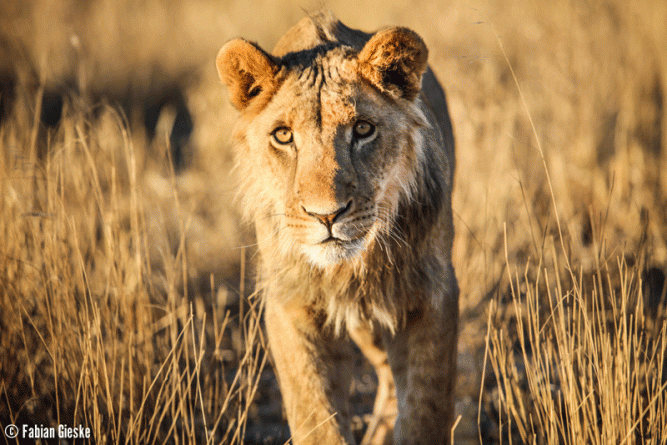
The Modisa Wildlife Project houses 31 Kalahari lions in wide enclosures until they can release them into the 10 000 hectare game reserve bordering the Central Kalahari. Image by Fabian Gieske.
Eight years ago, the game farm Modisa now calls home established a temporary solution to the human-lion conflict. Farmers had agreed to no longer shoot the lions predating on their livestock, and rather to capture them and hand them over to the wildlife authorities who would responsibly relocate the culprits. The stark starvation of the dry desert leads quite predictably to the insufficiency of prey species and the lions’ subsequent search for more. The sparse supply of food only increases competition between the cats, driving the relocated individuals back toward the cattle farms where an easy target would nourish a hungry lion. A solution for this well-intended, yet unsuccessful initiative was needed, which is where Valentin and Mikkel have stepped in to provide an extensive sanctuary for these unplaced, captive lions.
The game plan in action is one that encourages the assistance of passionate volunteers to ensure the health and welfare of these wild lions and eight African wild dogs, in 25 hectares of enclosure space. The outcome of the Modisa Wildlife Project is to create an area where these predators can live out their wild existence safely and naturally, which requires that the large game reserve be fenced off from neighbouring farms. If boundaries can be built around the perimeter of the 10 000 hectare game reserve, as well as around the volunteer camp, the farm can function successfully as a big-game reserve. The brimming population of blue wildebeest and eland ensure that the carnivores will be well-fed, while correct fencing will allow the existing guest lodge to conduct its popular Bushmen activities, and the reserve would operate supremely.

Once Modisa has successfully erected perimeter fences, 10-15 lions will be released onto the reserve. Image by Fabian Gieske.

For the last 8 years, these lions have been captured instead of being shot by farmers who have caught the lions preying on their cattle. Image by Fabian Gieske.
Modisa’s volunteers will partake in this conservational fence construction, and to the study and sustainability of the lions, and the Kalahari ecosystem as a whole. As it stands, the achievement of fenced borders will allow for 10-15 of the lions to be released onto the reserve, while many of the older animals that won’t have a chance of survival in the wild will have a place in Modisa’s 25 hectare ‘retirement village’. The remaining lions will still be seeking asylum in alternative game reserves; a process that requires careful execution to avoid the relocation problems that have prevailed in the past. Co-founder, Valentin, explained the problems he experiences with this matter:
“We have 31 lions at the moment and I am looking for solutions in other private parks to relocate them. The biggest hassle at the moment is the canned hunting industry in South Africa, because I have interested parks there, but Botswana does not issue licenses for export since they are worried the lions might end up in a canned hunting situation…”
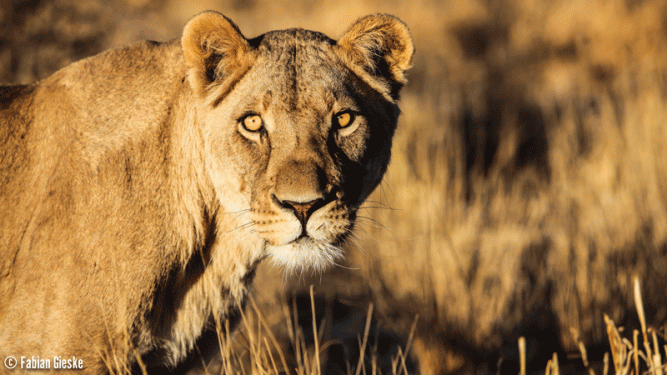
Unfortunately these lions have not been successfully relocated in the past, as the lack of prey species and the competition with other wild lions has driven them back to the farms, where they risk being shot. Image by Fabian Gieske.

The 31 lions are housed in a total of 25 hectares of enclosures until they can be released onto the reserve. The lions are fed manually and are not able to breed, which maintains their populatiion size. Image by Fabian Gieske.
Valentin and Mikkel have prioritised the efficacy of such a delicate and impactful programme, one which directly influences not only the survival of the lions, but also the sustainable development of the reserve and its animal populations. The ethicality of the practice is of primary importance, as is the education of the public, and Modisa’s goals are directed toward the conservation of the Kalahari and its inhabitants. Here, Valentin informed me of Modisa’s operational procedures and functional goals:
“We have done gene-tests with all the lions, rabies vaccinations, micro-chipping, blood tests for diseases, etc. We came here to get those animals out of their cages, and simultaneously, try to gain a reputation in the area in order to educate people from surrounding communities, as well as our volunteers from overseas. There are still more than 300 lions shot in cattle farms or residential areas in Botswana each year and that is only the official number. I don’t think we want to guess how many are not being reported.”
Volunteering at Modisa is a commitment to conservation, and an opportunity to educate and be educated in the importance of environmental sustainability. It offers observational interactions with the African lion and active participation in solving one of the biggest issues facing the species’ survival today, human-wildlife conflict.
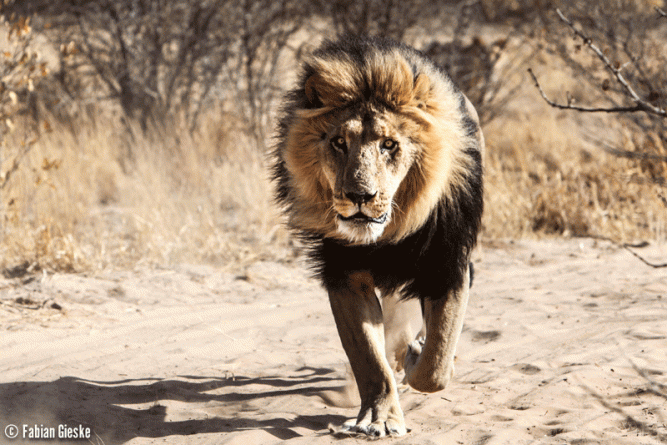
Volunteers at Modisa Wildlife Project will assist in the feeding of the animals, enclosure cleaning and ecological research. Image by Fabian Gieske.
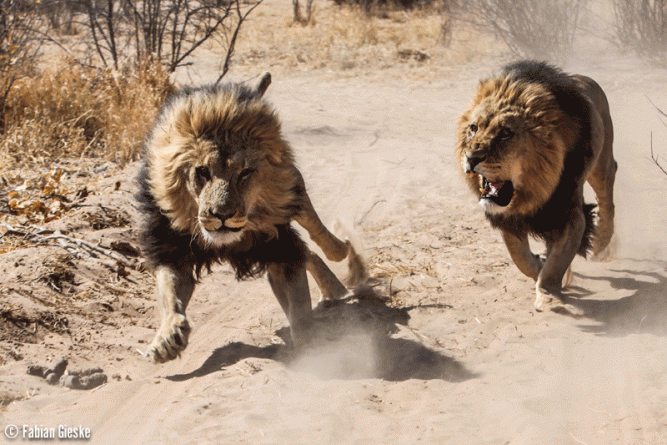
Co-founder of Modisa, Valentin Gruener, explained that these lions can not be relocated to South Africa due to risks of the canned lion hunting industry. This further restricts the relocation options for the lions at Modisa that are difficult to place, even in Botswana. Image by Fabian Gieske.
This post is brought to you by Sun Safaris, organisers of Southern and East African safaris, holidays and nominees in the category of ‘Africa’s Leading Safari Company’ for the World Travel Awards 2013. Check out Sun Safaris on Facebook, Twitter and Pinterest
This article, Lions of the Kalahari: Seeking Asylum, was originally posted on the Getaway Blog by Chloe Cooper.
Related Articles

 Yahoo Finance
Yahoo Finance 
